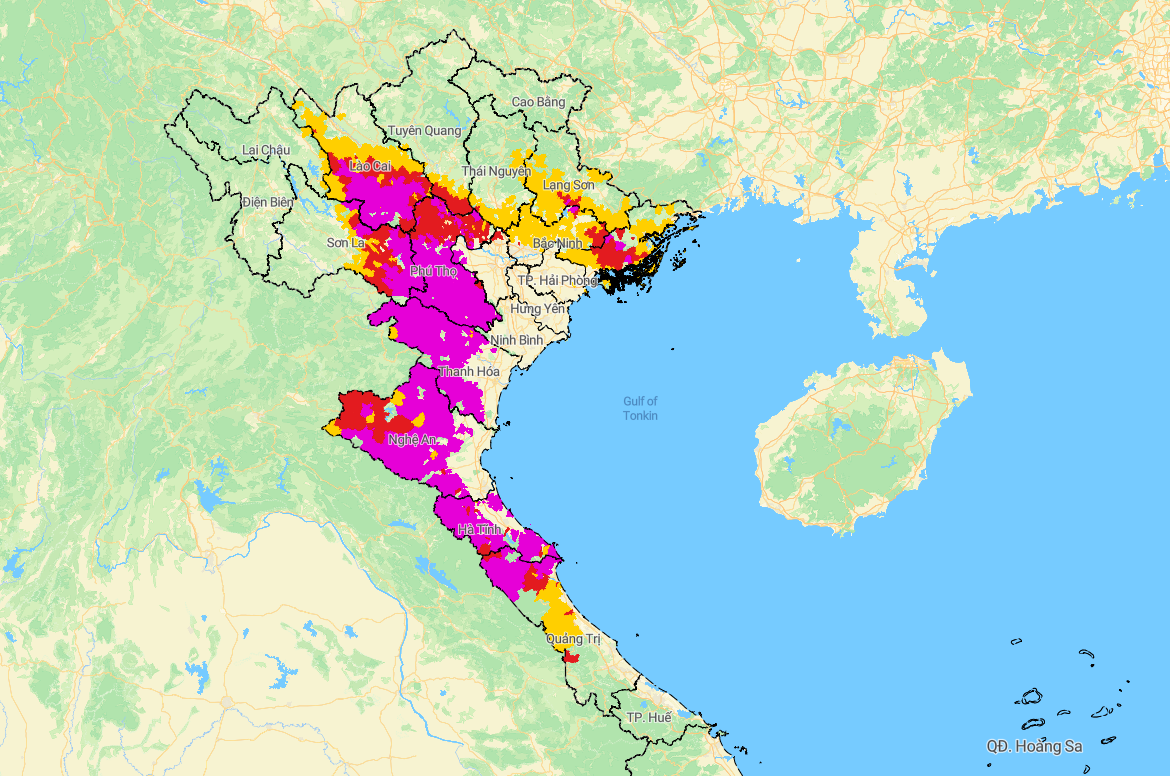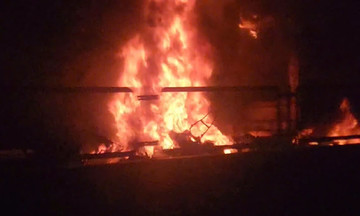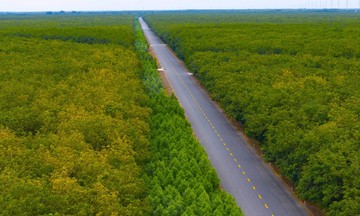According to the National Center for Hydro-Meteorological Forecasting, in the past 24 hours, many mountainous provinces and North Central Coast provinces have experienced heavy rain. Hong Thuong (Ha Tinh) recorded 575 mm, Van Xuan (Thanh Hoa) 537 mm, Hua Na (Nghe An) 484 mm, and Van Mai (Phu Tho) 433 mm. Many areas have reached saturated soil conditions, leading to a high risk of landslides.
In the next 3-6 hours, rain is expected to continue with common amounts of 20-80 mm, and over 150 mm in some places in Phu Tho, Son La, Lao Cai, Thanh Hoa, Nghe An, and Ha Tinh. Quang Ninh, Lang Son, and Bac Ninh may experience 20-50 mm of rain, and over 80 mm locally.
 |
Map of landslide and flash flood risk areas at 9 a.m. Photo: Hydro-Meteorological Administration |
Map of landslide and flash flood risk areas at 9 a.m. Photo: Hydro-Meteorological Administration
Meteorological agencies warn that 714 communes and wards are at high risk of landslides and flash floods, mostly concentrated in Thanh Hoa, Nghe An, Ha Tinh, Son La, Phu Tho, Lao Cai, and Quang Ninh. Dozens of communes in Moc Chau, Mai Chau (Son La, Hoa Binh), Muong Lat, Quan Son (Thanh Hoa), Quy Chau, Que Phong (Nghe An), Huong Khe, and Ky Anh (Ha Tinh) are at very high risk.
People in mountainous areas, near rivers and streams, and in areas with steep terrain are advised to be cautious of flash floods and landslides, closely monitor weather forecasts, and proactively evacuate if necessary.
Yesterday afternoon, Typhoon Kajiki made landfall in central Vietnam with winds of up to level 12, causing widespread heavy rain. The storm resulted in three deaths, 13 injuries, and damage to over 6,800 houses (roofs blown off), and flooded over 3,000 others. Tens of thousands of hectares of rice, crops, and aquaculture were also damaged. Transportation and power infrastructure were severely disrupted: over 1.7 million households lost power, hundreds of power poles collapsed, many flights were canceled or diverted, highways experienced landslides, and many areas were deeply flooded.
By the morning of 26/8, the typhoon had weakened into a tropical depression over Laos, but its circulation continued to cause heavy rain in central and northern Vietnam, with many areas recording rainfall exceeding 200-600 mm. Hanoi and several northern provinces experienced localized flooding, causing traffic chaos. Authorities assessed Kajiki as an unusual typhoon, forming rapidly, moving slowly, and leaving significant damage in affected areas.
>> Details of communes and wards at risk of landslides and flash floods
Gia Chinh












